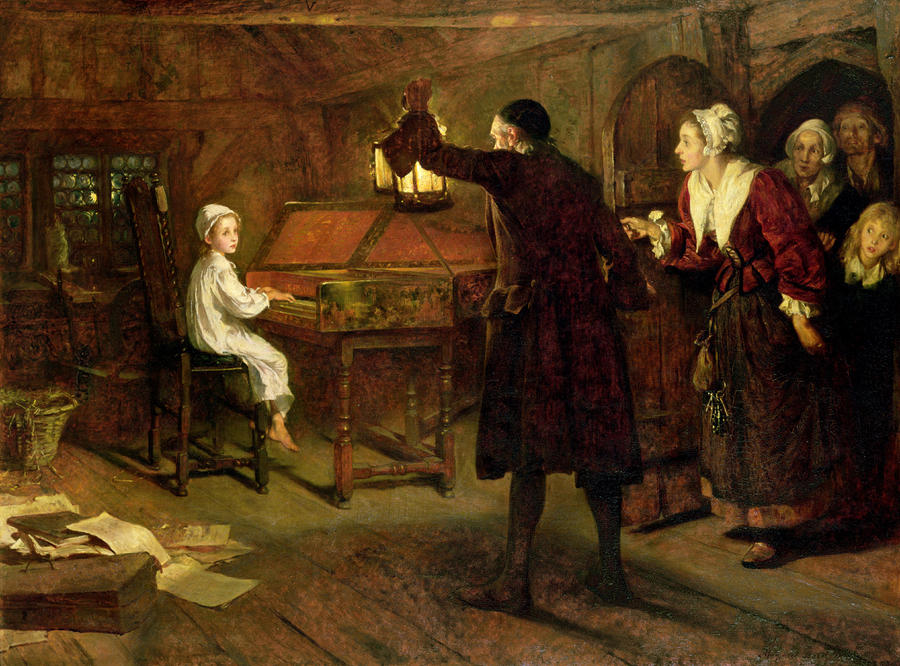
Margaret Isabel Dicksee’s 1893 painting The Child Handel is based on a story about the composer’s childhood:
Handel’s father strongly opposed the child’s passionate love for music, and the more his great gifts developed the more severely was he forbidden to occupy himself with music. The little boy was obliged to have recourse to subterfuge, and when his elders believed him snug in bed he used to steal on tip-toe to the lumber-room, where he had discovered an old spinet, on which he played softly to his heart’s content, alone and fancy-free. In one of these moments of enjoyment, when the divine genius spoke to the child, he forgot himself and played louder and louder — all the sound of the old spinet streamed through the silent night, waking the sleepers in the house, who believed that the angels were keeping vigil over the old town of Halle. But little George’s father bethought himself of the musical propensities of the boy, and, as the latter was not to be found in his bed, the lantern was lit and a search-party followed where the music led them. Alas! Poor George was found, severely reprimanded, and dismissed to bed.
This telling is from the Strand, April 1904. The story is disputed, but Handel did display enough skill as a child to induce Duke Johann Adolf I to recommend him for musical instruction.
